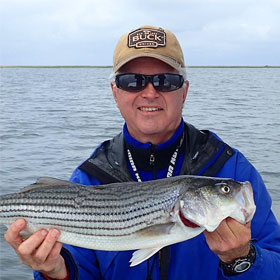Basic Boating Right of Way Procedures for Powerboats
By Ken Schultz
Aug 14, 2020
Without traffic lights, stop signs, marked lanes, and clearly defined passageways it might look like a boater can just steer any which way he or she pleases while piloting a boat on an open body of water. Sometimes you can. But proper and judicious navigation is an important component of responsible boat use, and there are boating rules you should adhere to for the sake of safe boating, as well as to avert accidents.
Most boaters try to avoid interfering with other boaters, even if they are not exactly following established boating right of way procedures, but not all of them do it in what is the generally accepted and uniform manner. I’ve watched boats pass other boats in an unsafe way, unnecessarily cross in front of others, head to the wrong side of a channel in the face of oncoming traffic, get in the way of boats that were not under power, drive too fast right in the wake of another boat, and other things that could be problematic and which are easily avoided.
Here are some basic boating right of way procedures for powerboats. There are other concerns with respect to sailboats.
- First, don’t be in a hurry. Proceed cautiously whenever you’re in close quarters, near other boats, and in areas with navigational challenges (sandbars, shoals, reefs, narrow channels, etc.).
- The most basic boating right of way event occurs when two powerboats are approaching head-to-head. Each should steer to their starboard (right) side, meaning that the boats safely pass each other port to port. One short blast of a horn from the boats signals their intention to do this, although it is my experience that most boaters simply steer the proper way without signaling.
- When a powerboat is overtaking another powerboat that is ahead of it, the overtaking boat must stay out of the way of the boat being overtaken. There are horn signals that may be used (especially in narrow waterways) to indicate which side of the boat the overtaking boat will pass on, but the majority of boaters do not signal.
- Probably the most common boating right of way event occurs when two powerboats are on a passing course. Here, the one that has the other on its starboard side is considered the give-way vessel, and must keep out of the way of the other.
Often these procedures are not precisely followed, and in some cases, boaters ignore them, so it is up to each boat operator to be careful and not to assume that the other boater is going to follow accepted boating rules. I’ve often had the right of way in a passing situation when it seemed clear that the other boat was not making an effort to avoid me. So I’ll slow down and pass behind that boat as a matter of prudence, rather than risk having an accident even though I technically had the right of way. If you are heading to the water, make sure your boat is registered.









